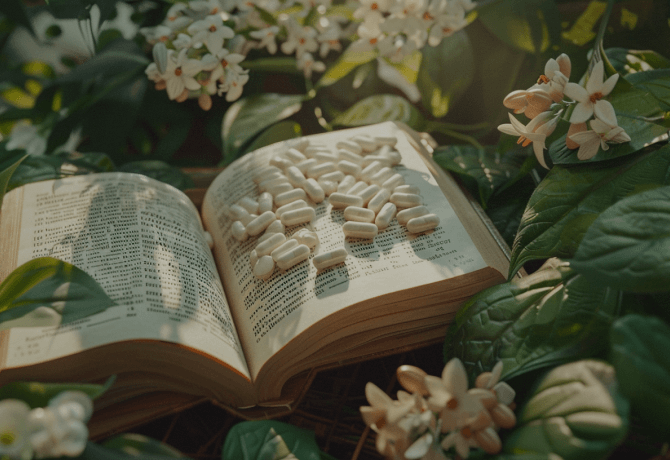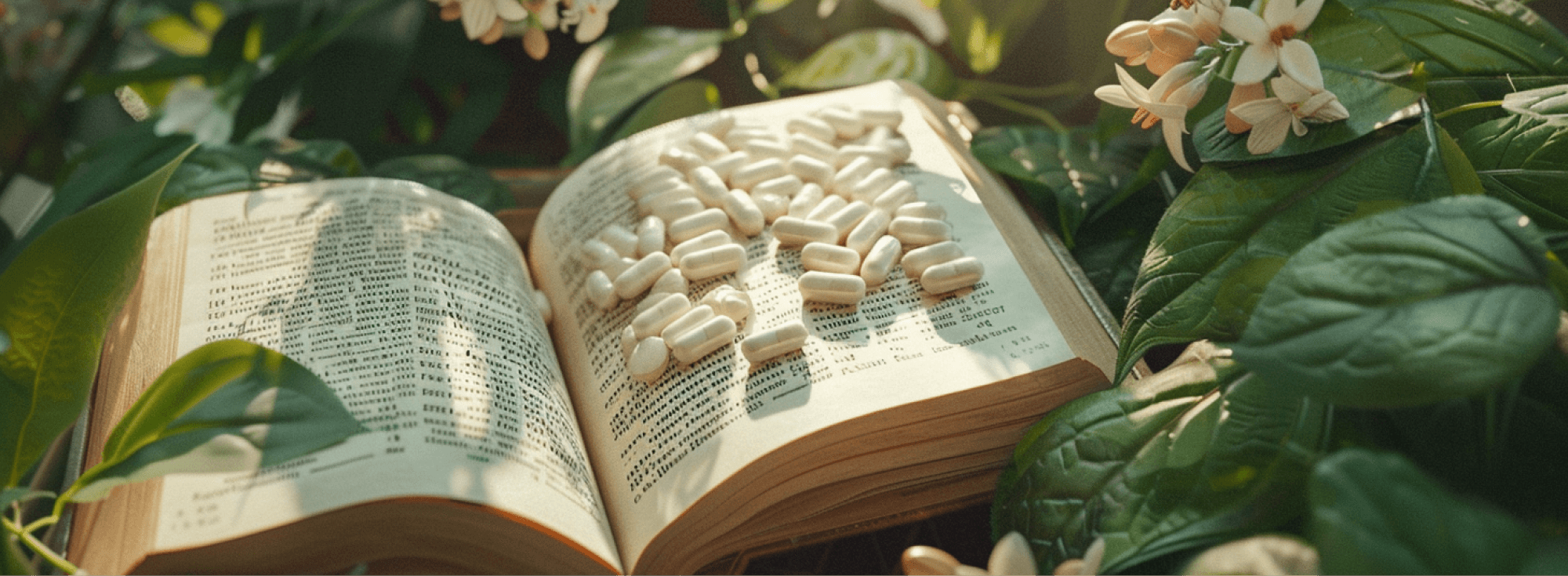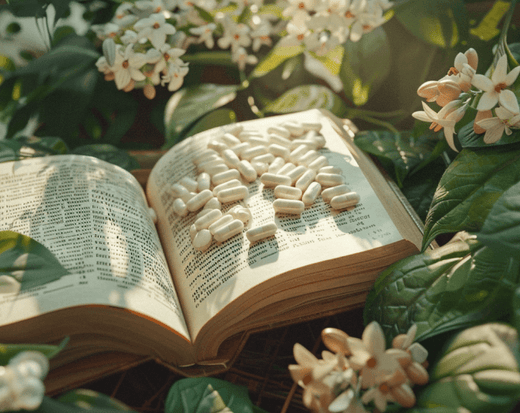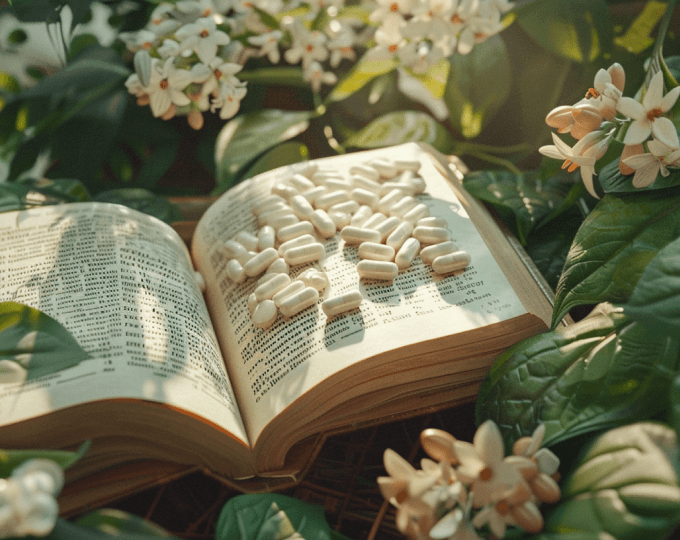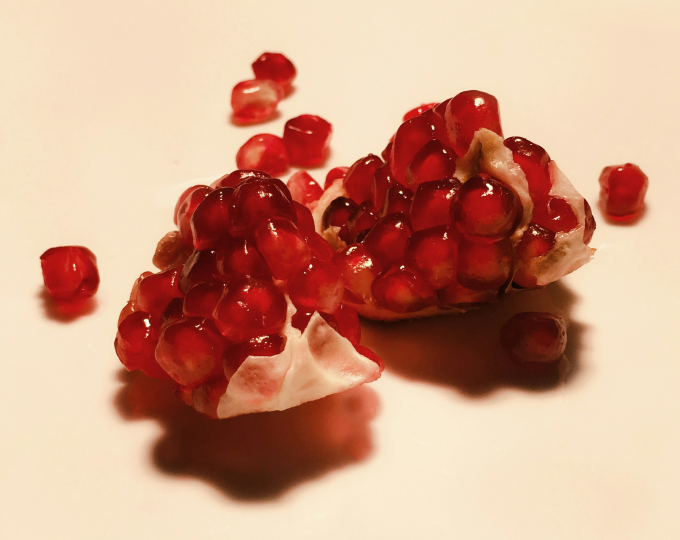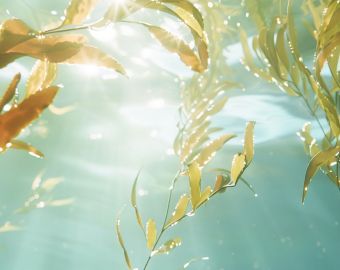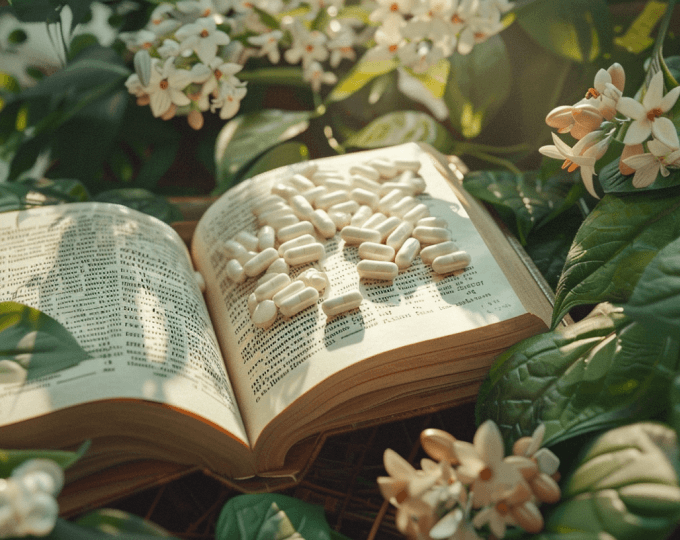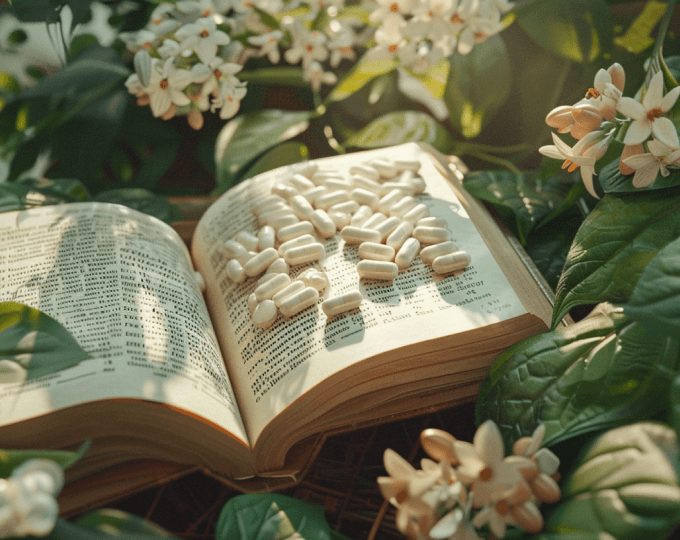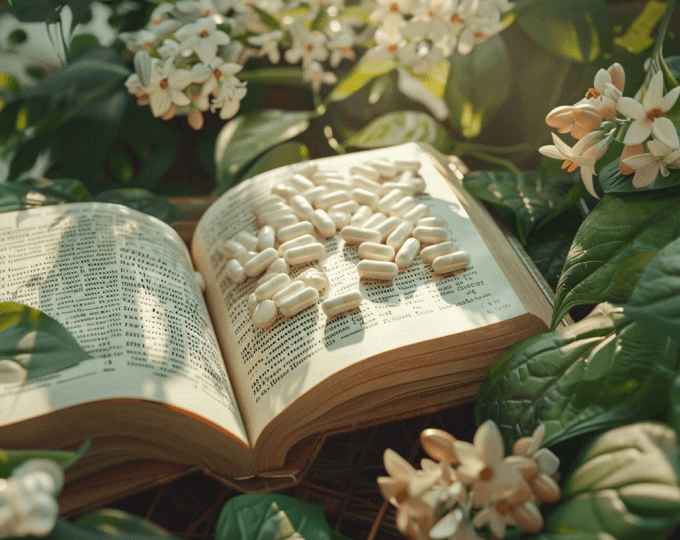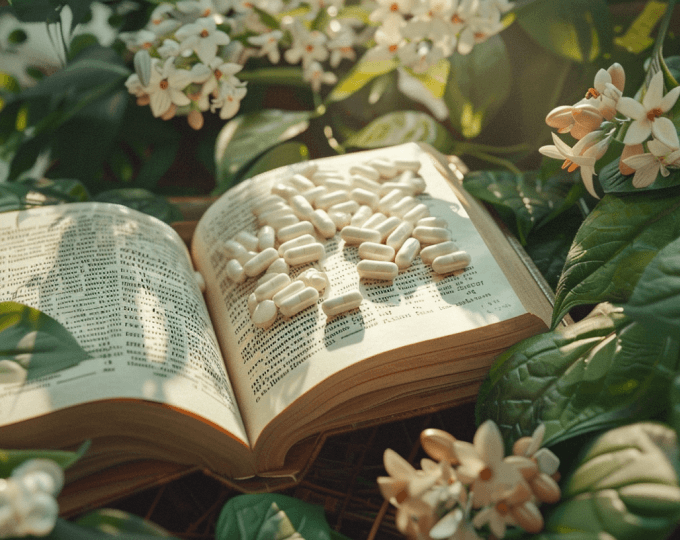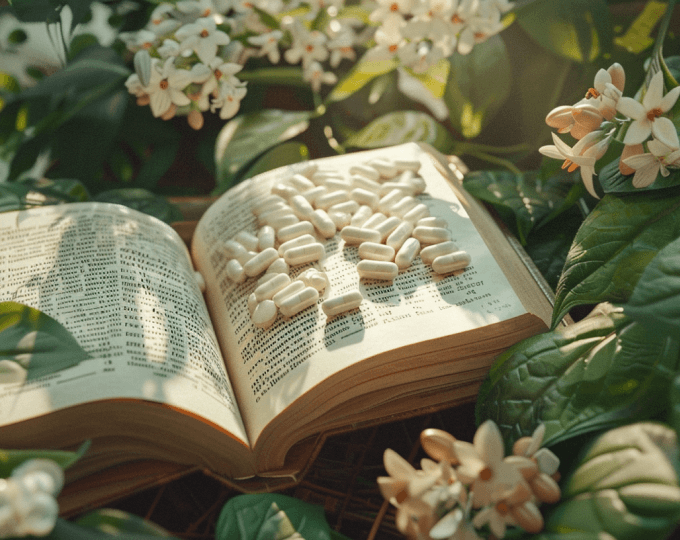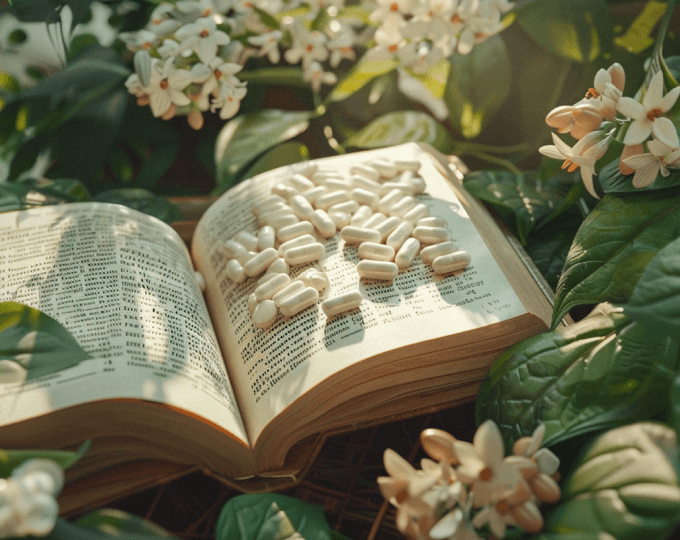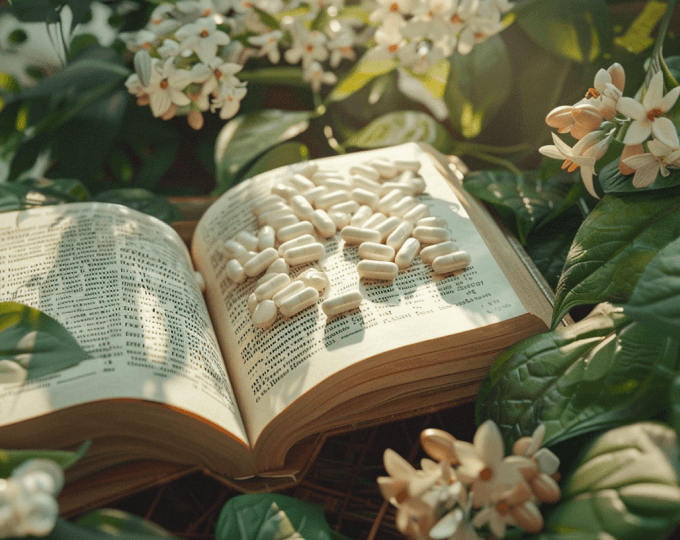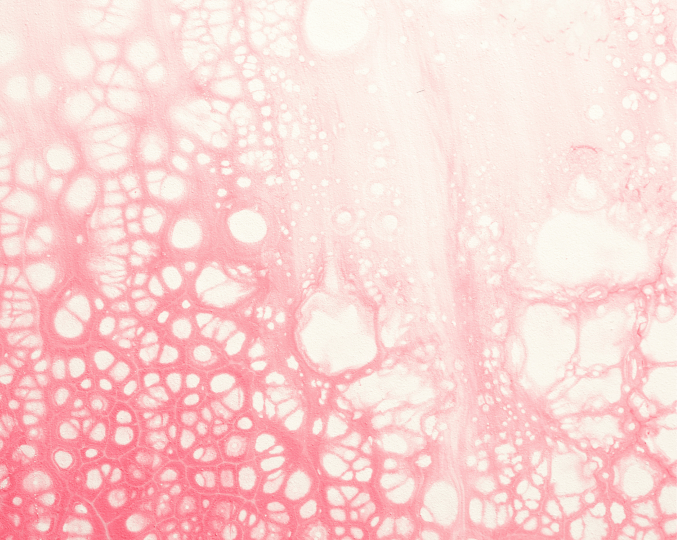Themen dieses Blogartikels:
Table of contents
- Definition: What is astaxanthin?
- What functions does astaxanthin have?
- What makes astaxanthin unique?
- When do you especially need astaxanthin?
- What should you pay attention to when taking astaxanthin?
- Which foods contain particularly high levels of astaxanthin?
- Astaxanthin capsules: quality and supplier selection
- Conclusion on Astaxanthin
- Bibliography & Sources
Definition: What is astaxanthin?
Astaxanthin, abbreviated to AXT, is a natural pigment belonging to the carotenoid family and is known in Germany and around the world, particularly for its red color.¹ Various green algae, such as the blood-rain algae (Haematococcus pluvialis), as well as some yeasts and bacteria, produce this reddish pigment.² When aquatic organisms such as salmon, trout, crabs, or shrimp consume astaxanthin-containing microalgae or phytoplankton, the pigments they contain cause their muscle, skin, or shell to turn red. Flamingos, in turn, get their reddish plumage from eating these red crustaceans.³
The name astaxanthin is derived from the Greek words for "lobster" and "yellowish." The substance was previously known as hematochrome, a combination of the Greek words for "blood" and "color."⁴
But what functions does astaxanthin have and how does the body react to the regular intake of this natural substance?
What functions does astaxanthin have?
Algae produce astaxanthin to protect themselves from harmful UV rays. If the body of water in which they are found is in danger of drying out, for example, they alter their metabolism and produce the red pigment as protection against intense sunlight, heat, and water shortages. This allows the algae to survive for extended periods without water or food.⁵
Through the food chain, astaxanthin ultimately enters the bodies of fish, crustaceans, and birds, which also benefit from the carotenoid's positive properties – it protects them from cell-damaging UV radiation and free oxygen radicals.⁶
Advertisement
Specially developed for women's health & the hormonal system
With the premium natural ingredients Ashwagandha, Green Tea Extract (EGCG), Astaxanthin & Dong Quai (Chinese Angelica)
-
Supplemented with vitamin B6 & pantothenic acid for hormone regulation
No fillers or flavors
Developed with doctors & experts
Delicious taste
Easy-to-dose liquid product
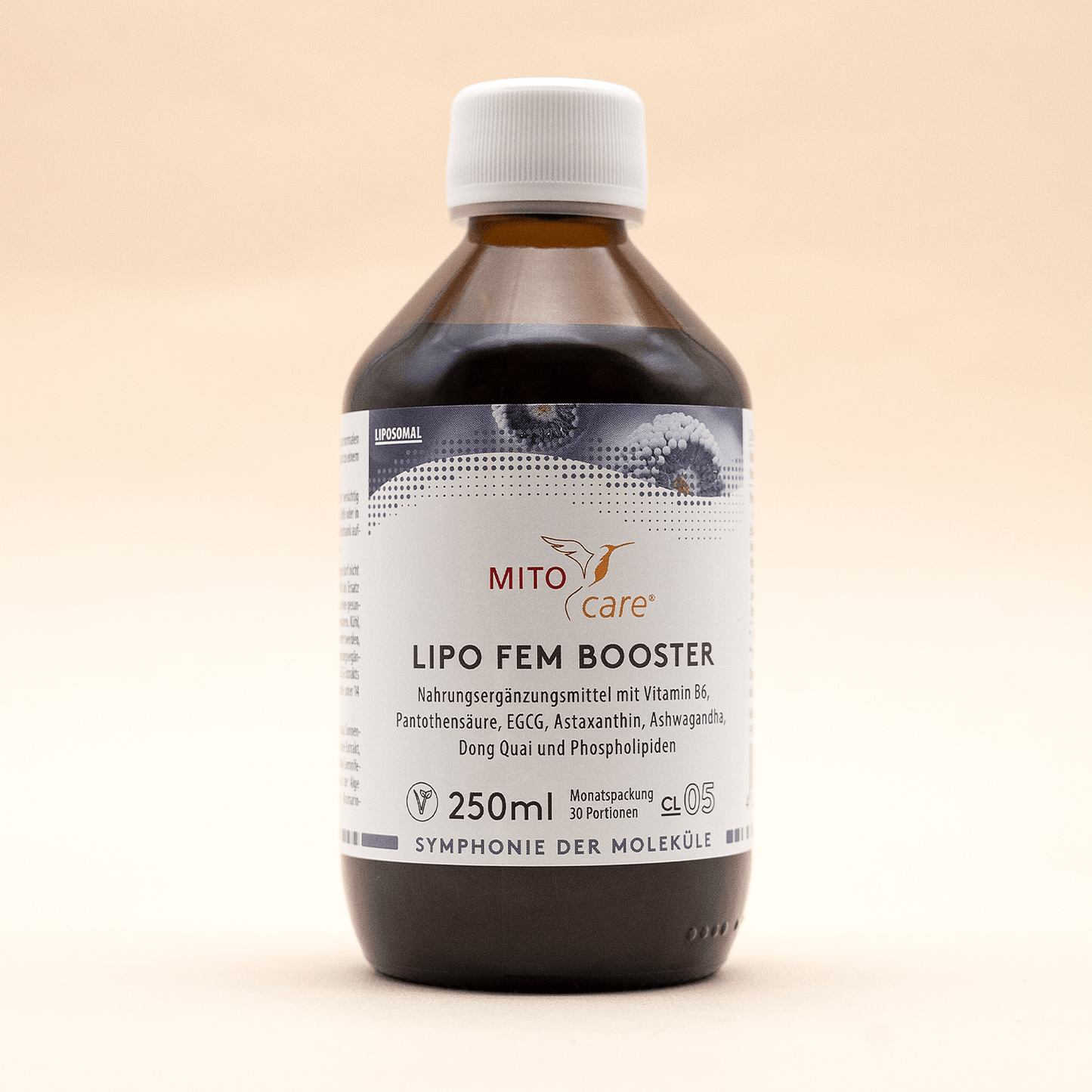
What makes astaxanthin unique?
Structurally, astaxanthin is similar to other carotenoids such as β-carotene, zeaxanthin, and lutein. Although it cannot be converted into vitamin A by the human body like β-carotene, it still has vitamin-like antioxidant properties. This means that the reddish pigment can prevent cell damage caused by oxidative stress.⁷
Good to know: Studies have shown that astaxanthin is ten times more effective than β-carotene and is therefore considered a particularly powerful antioxidant.⁸
When do you especially need astaxanthin?
In addition to its cell-protective effect, astaxanthin is said to have other potentially health-promoting properties, such as anti-inflammatory, immune-boosting, and blood pressure-lowering effects.⁹
Research is currently underway to determine the extent to which this natural substance can protect the cardiovascular system and nerve cells, for example, or increase skin resilience. In the future, astaxanthin could potentially be used to treat diabetes mellitus and/or neurological or gastrointestinal diseases:¹⁰ The results from animal studies so far are promising, but cannot be easily extrapolated to humans. Therefore, astaxanthin is not currently approved as a medicinal product, but is available as a dietary supplement.¹¹
What should you pay attention to when taking astaxanthin?
The recommended dosage for supplements containing astaxanthin-rich oleoresin is 8 mg for people over 14 years of age. Capsules often contain 4–10 mg of astaxanthin per serving, depending on the product and manufacturer.¹² This amount corresponds to the recommended daily intake.12 If you suffer from a crustacean allergy, you should check the source of the astaxanthin beforehand and avoid products derived from crustaceans such as krill. To improve the absorption of this fat-soluble natural substance, always combine astaxanthin supplements with fatty foods.¹³
Astaxanthin itself doesn't have a particularly noticeable taste when taken in supplement form, such as capsules. Most astaxanthin preparations are offered in capsules, as the pigment doesn't have a particularly pleasant taste in its pure form as a powder or oil. In algae, especially in Haematococcus pluvialis, the best-known source of astaxanthin, the taste is also usually mild and rather neutral.
If you need to take medication, consult your doctor beforehand, as the carotenoid can affect certain liver enzymes involved in the breakdown of medications.¹⁴
Which foods contain particularly high levels of astaxanthin?
Astaxanthin occurs naturally in salmon, lobster, shrimp, crab, and prawns. Did you know? In fish farming, astaxanthin is used as the food additive E 161j. The reddish pigment gives the white flesh of rainbow trout a salmon-red color. The fish is then sold as "salmon trout."¹⁵
Astaxanthin is a natural pigment that is not considered a traditional plant substance, as it is mainly found in algae such as Haematococcus pluvialis. This species of algae is particularly rich in astaxanthin and is considered one of the best natural sources. The algae produces astaxanthin as a protective mechanism against harmful UV radiation and other environmental factors. In dietary supplements, astaxanthin from Haematococcus pluvialis is valued for its high concentration and purity, allowing it to be absorbed in a particularly effective form and being structurally closely related to other carotenoids, such as beta-carotene.¹⁶
Aside from seafood and algae, fruits and vegetables can also contain small amounts of astaxanthin, especially those with red, orange, or pink pigments. However, the daily dose of astaxanthin contained in these plant sources is usually not enough to fully reap its health benefits.
When it comes to astaxanthin, it may be easier to obtain the highest amounts of this powerful antioxidant through supplements. These provide a concentrated form of the natural pigment and allow you to reap its full health benefits. Astaxanthin from algae, such as Haematococcus pluvialis, has proven particularly valuable due to its particularly high purity and concentration.
However, if you prefer a plant-based source, you should use algae, as they are an excellent plant-based alternative to animal sources.
Astaxanthin capsules: quality and supplier selection
When purchasing astaxanthin capsules, especially online, pay attention to the quality of the product. Many suppliers advertise high-quality astaxanthin from the algae Haematococcus pluvialis, a particularly pure source. Reviews and recommendations from other users can help you find trustworthy suppliers. Make sure the product also contains important substances like beta-carotene and selenium.
Before purchasing, inform yourself about delivery conditions and shipping to identify a reputable supplier. Many online shops offer detailed information on the ingredients, dosage, and effects of astaxanthin. Keep in mind that dietary supplements can have different effects—reactions to astaxanthin vary from person to person. Therefore, make sure you take the recommended daily dose and monitor the effects.
Conclusion on Astaxanthin
Astaxanthin is a natural red pigment found primarily in algae and seafood such as salmon, shrimp, and crab. The pigment belongs to the carotenoid family and is known for its powerful antioxidant properties. Astaxanthin is naturally produced by algae to protect themselves from harmful UV radiation and other stressful environmental conditions and is absorbed through the food chain into fish and crustaceans, which benefit from this protection.
Astaxanthin differs from other carotenoids such as β-carotene in its particularly strong antioxidant effect, which has made the product increasingly popular in recent years.¹⁷
Astaxanthin is particularly used in the food industry, both as a colorant in fish farming (e.g. in salmon trout) and as a component of food supplements.
In addition to astaxanthin, selenium also contributes to cell stability and protection against harmful influences as a mineral, which is why both substances can be combined in a healthy diet. Algae and some plant-based foods are particularly suitable sources of astaxanthin and selenium. Therefore, those who prefer natural sources can obtain them from both seafood and plant-based products.
Overall, astaxanthin remains interesting due to its properties as a colorant and its versatile application in the food industry and as a component of dietary supplements.
This encyclopedia entry is based on carefully researched sources:
Bibliography & Sources
- chemie.de/lexikon/Astaxanthin.html
- lexikon.doccheck.com/de/Astaxanthin
- fitbook.de/ernaehrung/futterergaenzmittel-astaxanthin
- spektrum.de/lexikon/biologie/haematochrom/30461
- zentrum-der-gesundheit.de/ernaehrung/futterrgaenzung/antioxidantien-uebersicht/astaxanthin
- fitbook.de/ernaehrung/futterergaenzmittel-astaxanthin
- netdoktor.de/medizine/astaxanthin/
- pmc.ncbi.nlm.nih.gov/articles/PMC3917265/
- flexikon.doccheck.com/de/Astaxanthin
- flexikon.doccheck.com/de/Astaxanthin
- netdoktor.de/medizine/astaxanthin/
- verbraucherzentrale.de/wissen/lebensmittel/bedarfsergaenzmittel/astaxanthin-fuer-den-guten-durchblick-17747
- netdoktor.de/medizine/astaxanthin/
- verbraucherzentrale.de/wissen/lebensmittel/bedarfsergaenzmittel/astaxanthin-fuer-den-guten-durchblick-17747
- chemie.de/lexikon/Astaxanthin.html
- pmc.ncbi.nlm.nih.gov/articles/PMC3917265/
- pmc.ncbi.nlm.nih.gov/articles/PMC3917265/
